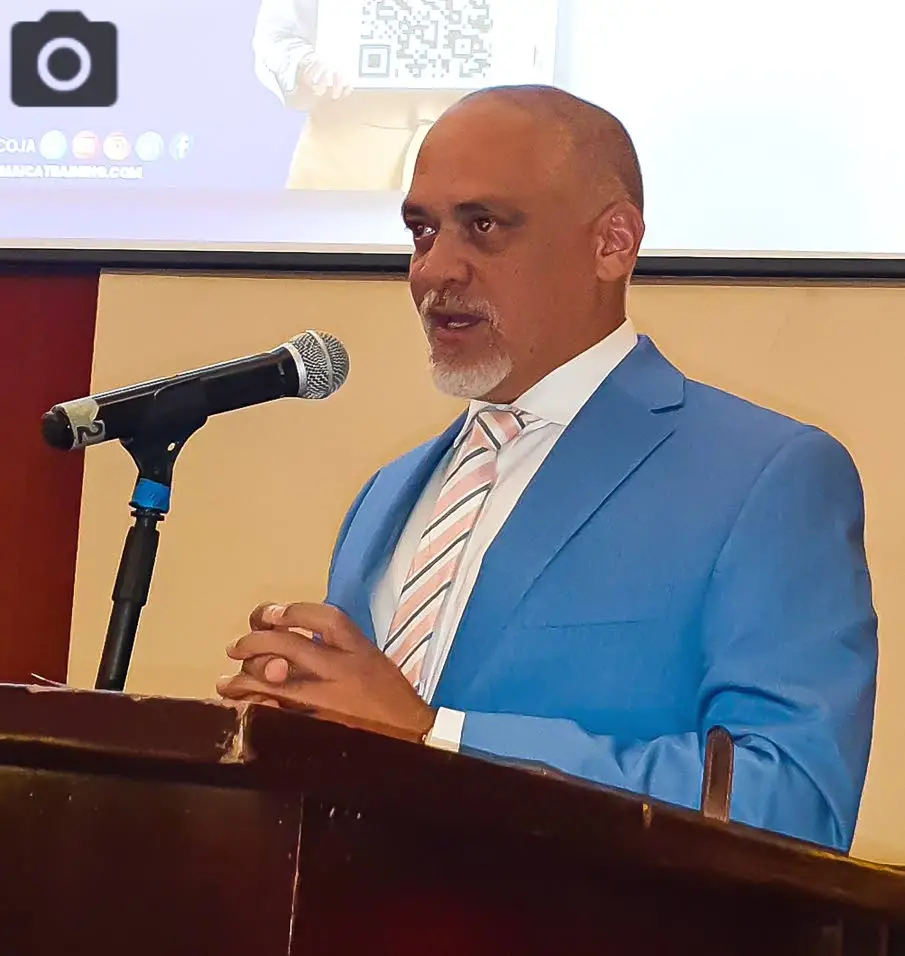
US election impacts tourist arrivals
…JHTA head shares positive outlook for upcoming winter season
The US presidential election in November is being cited among factors responsible for the flat performance seen for the tourism sector, which has in the last few months witnessed slower growth owing to lower than normal tourist arrivals from Jamaica’s main source market.
Coupled with other impacts from Hurricane Beryl, which rattled parts of the island’s south coast in July, and previous travel advisories from the White House which cautioned US citizens against visits to local shores, output from the ‘bread and butter’ industry barely increased in the April to June quarter after value added from the usually dominant hotels and restaurants sector grew by only a meagre 0.1 per cent, based on estimates provided by the Planning Institute of Jamaica (PIOJ) last week.
“We did have some fallout from the hurricane and earlier from a negative travel advisory, which was somewhat updated later; however, [concerning] the sector’s current performance, it is important to note that we have always had some fallout when presidential elections are expected in the US, which is one of our biggest markets. What we have seen is that whenever there is any form of uncertainty in that market, especially during periods such as elections or a recession, this tends to impact tourism, bringing about a fall in the usual activities,” president of the Jamaica Hotel and Tourist Association (JHTA) Robin Russell said in his assessment of the sector’s performance and output during an interview with the Jamaica Observer on Monday.
The 60th quadrennial presidential election slated for November 5, 2024 in the US is to see a run-off between Democratic candidate Kamala Harris and former President Donald Trump from the Republican camp as they vie for occupancy of the globally powerful White House.
The impact of an election year, which global analysts believes can truly influence tourism activities, they say, stems from trends which shows some travellers opting to delay their travel plans until after a poll, as they seek to instead conserve on funds while observing how political changes may affect things such as currency exchange rates, economic conditions, or even international relations.
The US market, which accounts for more than 70 per cent of visitors coming to Jamaica last year as a result of the more than 2.1 million in stopover arrivals from that country, benefited from a 15.2 per cent increase in visitors when compared to the previous year. Welcoming over 4 million tourists last year, the sector is looking to surpass this number in 2024, especially as it pushes to realise the triple five objective which seeks to achieve US$5 billion in earnings, five million tourist arrivals over a targeted five-year period ending in 2025.
The JHTA head, in noting that while growth seen over the last few quarters may not have been at the desired level, said the sector remains grateful to have kept arrivals at a moderate degree.
“We have not seen the growth we would have wanted, but what I would say is that we still have the same arrival as 2023, which is also still above that for our 2019 benchmark year. Considering that we’re now seeing about a one per cent decline when the impacts from Beryl and some other factors are added, this means we have managed to remain at the same level, so we are not overly alarmed,” Russell told the Business Observer.
According to PIOJ estimates, preliminary data on foreign national arrivals for the April-June second quarter stood at 699,733 visitors—0.1 per cent above that for the the corresponding quarter of 2023. Visitor expenditure, which also increased by little over one per cent for the period amounted to approximately US$1.0 billion.
The PIOJ which has also forecasted a possible downturn in overall economic activity for the current July-September quarter, with effects largely associated with the adverse impacts of Hurricane Beryl on a number of industries, said that reduced output from the hotels and restaurants sector is likely to stem from the cancellation of flights and diversion of visitors to alternative destinations seen during the passage of the hurricane. Provisional data already reflects downturns of some 7.7 per cent in airport arrivals for the month of July.
In light of a negative short-term outlook, the PIOJ has further projected the local economy to contract within the range of -0.1 per cent to -1.0 per cent over the third quarter of the calendar year. For fiscal year 2024/25, the expectation, it said, is also for gross domestic product change within the range of -1.0 per cent to 1.0 per cent.
“While we may not again see significant growth for the September quarter, we will still probably end up where we were last year, which would still be a significant contribution to the economy,” Russell stated, noting varied occupancy levels across hotels confined within the 30 per cent to upper 70 per cent range.
For the first six months of 2024, output from the sector at 3.5 per cent came in behind that for mining and quarrying at 12.1 per cent; agriculture at 5.0 per cent; and electricity and water supply, which went up 4.3 per cent.
Tourism, which has long been a strong driver of growth for the local economy, Russell said is likely to deliver better output during the latter part of the year, in keeping with projections for the potential economic contraction to be short-lived and as the winter tourist’s season begins. The bumper tourist season usually which usually begins around December 15 will run all the way up until mid-April.
“Based on early feedback our winter forecast is looking good…a lot of people are already getting forward bookings into December and onwards as we look to welcome the next winter season, hence my prediction is for it to a good one,” Russell said.
Bullish on plans to realise the triple five objective outlined by the tourism ministry, the JHTA head said that aside from some outside influences which have hampered progress, the sector largely remains on track to achieving the targets.
“Even as we take stock of some airline and supply-chain problems, our push in new markets such as India should help to get us to those five-by-five-by-five numbers. Remaining a key area of focus for the industry, the strategy to get into more markets continues to be active. While having better coverage in our traditional markets is always a plus, the idea is really for us to get into those new markets so that where one market may have a shock, it will not affect the entire tourism product. Outside of the markets we have been eyeing, Latin America is the big push for us now, so we hoping to have more airlines from this region come by December,” he said.
























